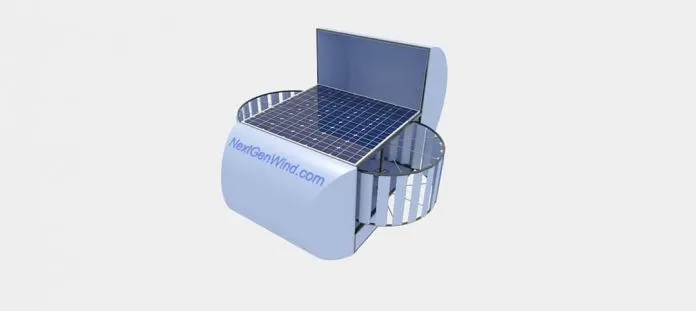The disadvantage of solar and wind power is instability. The sun does not shine for 24 hours, and the wind can completely stop for several days. At the same time, homes and businesses are consuming electricity 24h/7d. And to provide them with electricity can only fuel, nuclear and hydro. But is it really true?
Combining well known technologies
A group of experts from Latvia has proven that the combination of two unstable sources of electricity, as well as the use of waste-free energy storage allows to obtain a power plant that is not inferior to nuclear and hydroelectric power plants.
The main objective of the new project is a low-cost, environmentally friendly power plant that requires minimal maintenance and produces no waste. First of all, high efficiency solar panels and wind turbines were combined with aerodynamic lenses.
Modern solar panels have high efficiency, and most importantly – the long life span. That is, it will take decades before you need to replace your solar panel. High-efficiency solar technology is not new, especially given that even budgetary options confidently storm the psychological bar at 20% efficiency. At the same time, the panel time for the space industry confidently go up to 50% and above.

The second component that generates electricity is wind generators with air lenses. Their feature is that the air lens directs the flow at the blade, and also concentrates and accelerates it. In this way, the wind turbine operates as efficiently as possible and receives sufficient airflow even in low winds.

Peak use compensation
To reduce peak electricity consumption, the new system plans to use supercapacitors, which are already used in different industries for exactly the same task. Therefore, power plant equipment with supercapacitors is not new to the industry.
Electricity accumulation
But in order to save the day or in the strong wind, it was suggested to use a slightly different battery technology. Namely – super flywheels. Such a device is a simple drum rotated in a vacuum on magnetic suspension and used to accumulate kinetic energy, which is then used as needed through a shaft or converted to electricity by a generator. The efficiency of the flywheel is 98%. The losses are minimal.

The disadvantage of the flywheel is the gyroscopic effect that occurs when the drum is accelerated to very high speeds. That is, transportation of a “charged” super flywheel is problematic. But unlike a battery, the super flywheel has no limited life span and does not require regular replacement. A special impetus for the super flywheels is the availability of modern, more durable composite materials and ultra-high precision manufacturing. Thus, at lower volume, the drum can be accelerated to higher speeds.
Prospects
It is still too early to judge the development and implementation of the project, as the uninterrupted wind and solar installation is still under development. It is too early to judge its efficiency, though developers say that one such power plant will be capable of delivering capacity of up to 1000 MW. Therefore, you should wait for the construction of a working prototype and test results.
But it is well known that the main advantage of an uninterrupted wind-solar power plant is the almost complete absence of waste, minimal staffing and low cost. But at the same time, it has competitors that are already well entrenched in the market, in the form of traditional wind and solar power plants that use batteries to accumulate energy. Another competitor is the project of a power plant that uses artificial reservoirs as an energy storage device by pumping up the water using excess capacity. Both projects do not yet have real working models.


